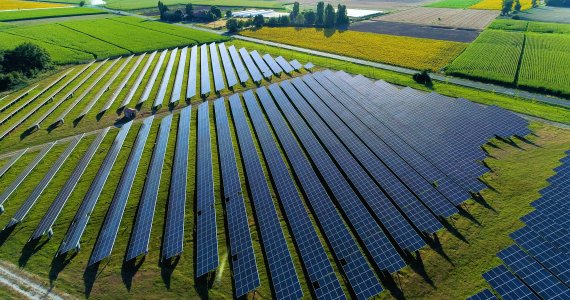The Dutch are eager to have clean energy. But they don’t want it generated in their immediate vicinity. In fact, businesspeople who want to establish wind farms in the north of the Netherlands have been threatened by activists. And even in ‘sustainable’ Wageningen, plans for solar farms on farmland were met with strong protest.
‘Almost everyone is in favour of sustainable energy, but we need to blend it in, both socially and in the landscape,’ says Friso van der Zee, one of the researchers at Wageningen Environmental Research who wrote the report Solar panels, nature and agriculture at the behest of the minister of Agriculture, Nature and Food.
You could say: just cover all the roofs with solar panels.
‘That’s right; that is what most people want. We have 800 square kilometres of roof in the Netherlands and there are currently solar panels on only 40 square kilometres of them. So there is still plenty of potential. Not all roofs are suitable: either the design is inappropriate or they are north-facing. But if 20 per cent are suitable, you get 160 square kilometres.
Is that enough?‘To reach the cabinet’s climate targets we need about 9000 hectares of solar panels by 2030, or 90 square kilometres. So in theory we could put all the solar panels we need in the Netherlands on roofs. But in practice, the developers who make solar farms are looking for places where they can install a large number, on the ground. Last week I was at a zinc factory in Budel where a solar farm of 60 hectares has been installed. The solar panels are on contaminated ground and the area is tucked away and inaccessible. Nobody has a problem with that; it’s fine. Some nice heather even started to grow there and there were lots of skylarks flying among the panels.’
In practice, developers look for places where they can install a lot of panels, on the ground
Is farmland suitable?‘Solar panels are indeed being located on farmland now too. Developers approach farmers and calculate how much a solar farm would generate in subsidies. No crop can compete with that. The developer then needs a permit from the municipality or the province. They are starting to set conditions. For example: keep some space between the solar panels so you can combine solar energy with nature management in the form of herb-rich grassland for insects and birds. Thanks to such rules, a solar farm could increase biodiversity in an intensively fertilized agricultural area. But only if you go about it the right way.’
What are the considerations for people starting solar farms?‘People oppose wind farms and solar farms, because they affect the landscape. Developers can pre-empt that by involving farmers and local residents at the planning stage. There are also examples where local people can invest and get some of the profits. Then it becomes their solar farm.’
Where should the solar farms be located?‘Not in nature areas, because we must look after our biodiversity. You won’t get a permit for that, anyway. It varies; you have to go looking for places where it’s possible. I saw a solar farm on a former rubbish tip along the A15. Perfect location because you can’t do anything else with it. Perhaps you could also combine solar panels with higher water levels in marshy areas to reduce
CO2 emissions. Not on open marshland, because of the openness of the landscape and the field birds, but in more closed landscapes.’

 Photo: Shutterstock
Photo: Shutterstock